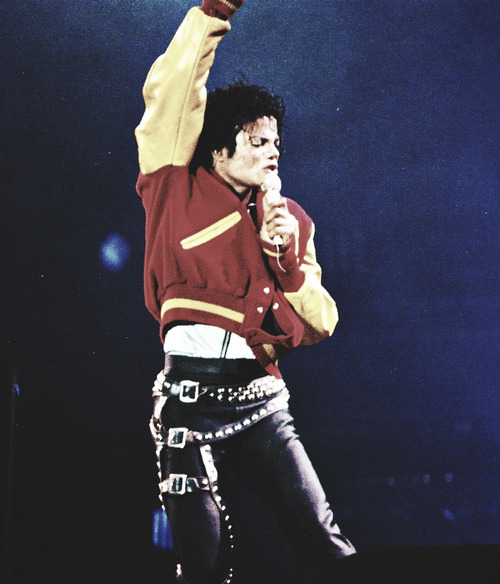THE STORY BEHIND "DON'T BE MESSIN' 'ROUND"

The finished product, then, is intentionally unfinished and spontaneous. "You can just hear him having fun," Forger says. "His spirit and emotion are totally there. He knew in demos he didn't have to be totally perfect in his execution. So he'd be loose. He'd throw in ad libs and dance or sing or pop his fingers or clap his hands. You just hear him enjoying himself."
Jackson first wrote and recorded "Don't Be Messin'" during the Thriller sessions with engineer Brent Averill. Around this time he was working on a variety of musical ideas, including demos of "P.Y.T." and "Billie Jean." "Don't Be Messin'" features Jackson himself playing piano ("He could do more than he ever really let people know," Forger says.) He also produced, arranged, and guided many of the instrumental parts, including the cinematic strings, Jonathan Maxey's piano part in the bridge, and David Williams funky guitar licks.
Ultimately, since "Don't Be Messin'" wasn't fully developed and so much other strong material was coming in for Thriller, Jackson decided to put the song on the back burner, having in mind to revisit it for his next album. "That was kind of how Michael developed ideas and songs," explains Forger. "He let the song unfold in its own time. Sometimes a song wasn't ready or didn't quite fit the character of an album or a project and it would stay in the vaults. And then at a certain point of time, he would pull it out again."
In this case, the track re-surfaced in 1986, during the early stages of the Bad sessions. Jackson worked on the song primarily with recording engineers Matt Forger and Bill Bottrell in the "laboratory," the nickname for his renovated home studio at Hayvenhurst. As was typical for Jackson rhythm tracks, the song was quite long (nearly eight minutes) in its early phases. "Michael loves a song to be long," Forger says. "He loves it to groove because he gets to dance to it—which is a big thing, because when Michael feels the music is making him dance it means the groove is in the pocket."
Jackson's grooves, however, were unusual in that they often lacked the predictable repetition of much dance music, surprising with strange beat patterns, textures and nuances. "Some of these long versions of ["Don't Be Messin'"] really sound very interesting because there's different things happening in different sections," Forger says. "It's really not like you're sitting there for eight minutes thinking it's terribly long, because things are happening within that length of time that make it feel like, 'Yeah, this is cool.' It's actually satisfying to listen to the rhythm."
Cutting the song down was often a brutal process for Jackson, especially the intros and outros. As with other songs on Thriller and Bad, though, Jackson tried to trim it down into the four-to-five minute range, which is where the new mix of "Don't Be Messin'" clocks in.
Jackson continued to work on "Don't Be Messin'" into late 1986, at both his home studio and at Westlake. However, once Quincy Jones came on board, the serious paring began and "Don't Be Messin'" was left on the cutting room floor. Jackson would pull out the song again during both the Dangerous sessions and HIStorysessions, updating its sound and adding new elements. Clearly, it was a song he liked. But ultimately it never found a home.
The version Matt Forger mixed was the last version Jackson worked on during the Badsessions in 1986. Forger feels it is the purest, most emotionally satisfying version: "It's exactly how Michael dictated it at the time. It's precisely Michael saying, 'this is how it has to be.'"
The 1986 demo isn't a groundbreaking song. The vocal is only partial-strength, the lyrics aren't finished, and the production isn't close to what it would be had it been fully realized by Jackson and Quincy Jones. However, it is a solid addition to the growing list of quality Bad-era outtakes (a list that also includes "Streetwalker," "Fly Away," and "Cheater"). "It's such a catchy underlying melodic hook," Forger says. "And it has a rhythmic feel that syncopates in such an interesting fashion." In a 2009 interview legendary recording engineer Bruce Swedien cited the track as one of his favorite unreleased Jackson songs. "It's just beautiful," he said . "Oh my God, there's nothing like it."
Like much of his work, the track doesn't fit neatly into a single genre, fusing flavors of Latin, jazz, and pop. With its breezy Bossa Nova rhythm and layers of interwoven hooks, it is a song that easily gets stuck in the head and makes you want to move—yet it also rewards multiple listens with its sophisticated syncopation and complex rhythm arrangement ("Music is like tapestry," Jackson once said. "It's different layers, it's weaving in and out, and if you look at it in layers you understand it better.")
For Forger, working on the track triggered memories of a simpler time in Jackson's turbulent career: "It just brought all the feelings back of what it was like in that era. Michael was just this exuberant, happy person. He wanted to challenge the world and make wonderful, great music."
What was Forger's goal in resurrecting the track?
"Just to make it authentic. Something Michael would enjoy and be proud of. It's got his charm and energy. If people appreciate it and enjoy it for what it is then I'll feel great. All I want it to be is enjoyed for the simple thing that it is."
hej goding! några planer för morgondagen? kramar